A continuing look at 86 years of DC Comics, beginning with New Fun #1, January 11, 1935 through March 1938.
Contributor mini bio: Robert “Bo” Brown
New Comics #1, published by Major Malcolm Wheeler-Nicholson, appeared on newsstands November 12, 1935, a little over 85 years ago. It was an appropriate title. The second magazine title published after New Funs 1-6 had new content, new contributors, a new size and new ways of presenting the material. The December cover by Vincent Sullivan is closer in size to modern comics and instead of a comic on the cover it featured one character who appears to be Sullivan’s character Jibby Jones.
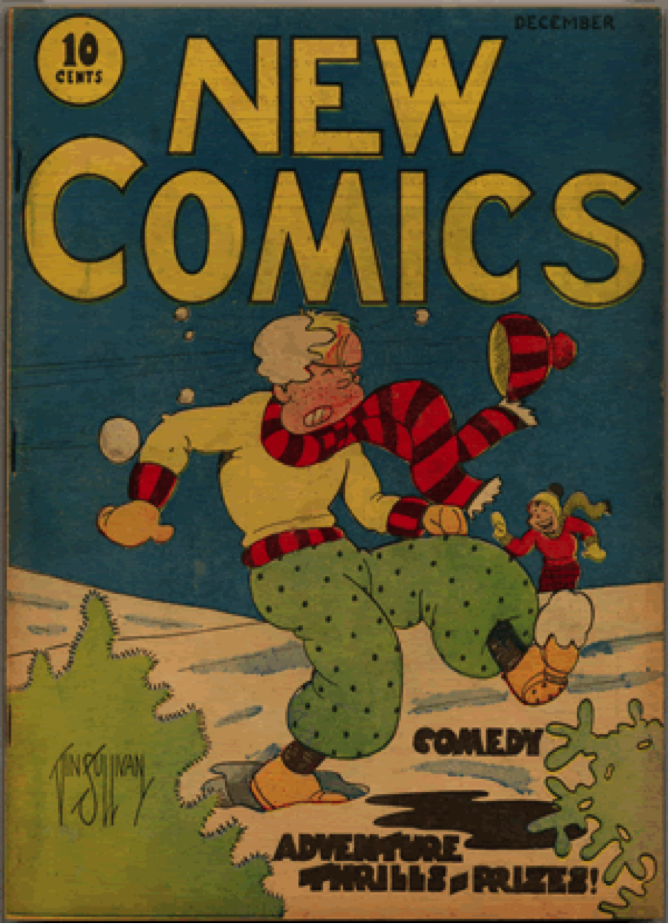
The publishing entity for New Comics #1 is no longer National Allied Publications, Inc. but National Allied Newspaper Syndicate, Inc. There is no listing of officers of the corporation in the indicia. David Saunders has suggested that the Major’s endeavors reveal his desire to create a newspaper syndicate. Incorporating as National Allied Newspaper Syndicate, Inc. would indicate that possibility. The Major also attempted a newspaper syndicate Wheeler-Nicholson, Inc. in 1925-1927.

It’s likely that each change of corporate entity of the Major’s comic magazines involved new investors or sources of money. The publication office for New Comics is again listed as the same for New Fun #5 and 6–420 DeSoto Avenue in St. Louis (World Color Press) with postage pending. The S-M logo for distribution isn’t on the cover but it appears on the next magazine issued for January, More Fun. Perhaps there was still some negotiation involving money with S-M that had not yet been resolved or it could be an error. However, given the importance of distribution, the power of the distributors and the Major’s struggles to fund the magazines I would guess there is more to it.
The masthead for New Comics #1 consisted of Malcolm Wheeler-Nicholson as Editor and Publisher; Vincent A. Sullivan, Assistant Editor; William H. Cook as Managing Editor; and John F. Mahon as Business Manager. It’s possible Cook and Mahon were contributing to the finances and it’s also possible one or both may be a cause of financial problems for the Major. The slant has always been that Cook and Mahon left the Major to form their own company due to the Major’s lack of funds but what if those problems were actually caused by Cook and Mahon through mismanagement? They didn’t appear to do so well with their company after leaving MWN. And interestingly according to David Saunders from a notice in The New York Times during the period New Comics #1 appeared, a Bankruptcy Court judge on December 19, 1935, ruled against Cook and in favor of Irving S. Manheimer for repayment of $3,613.67. Manheimer was the owner of PDC distribution company. John F. Mahon apparently worked as a salesman for Eastern Distributing Company at some point. Eastern Distributing Company is a player in the Major’s loss of his company and it’s worth noting these connections in light of the forced bankruptcy in 1938.
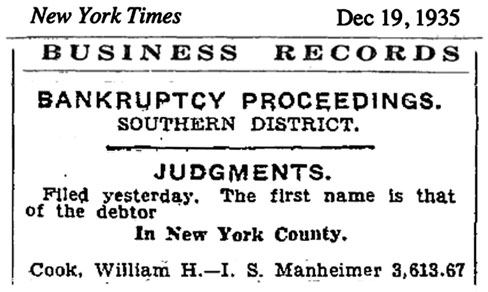
From David Saunders
On the first page there is a welcome from the editors. I was struck by a couple of things. One, that New Fun #1-6 was referred to in the masthead and on the covers as “The Big Book of Comics.” New Comics #1 on the other hand is called “The international picture story magazine.” Instead of comic, it’s called a picture story magazine. The introduction states, “Here is a magazine of picturized stories chock full of laughter and thrills, comic characters of every hue, knights and Vikings of ancient days, adventuring heroes, detectives, aviator daredevils of today and hero supermen of the days to come!” The use of the word picturized rather than comics is an interesting choice and may reflect one of the aims of the earlier Wheeler-Nicholson newspaper syndicate to create comics that were based on classics.
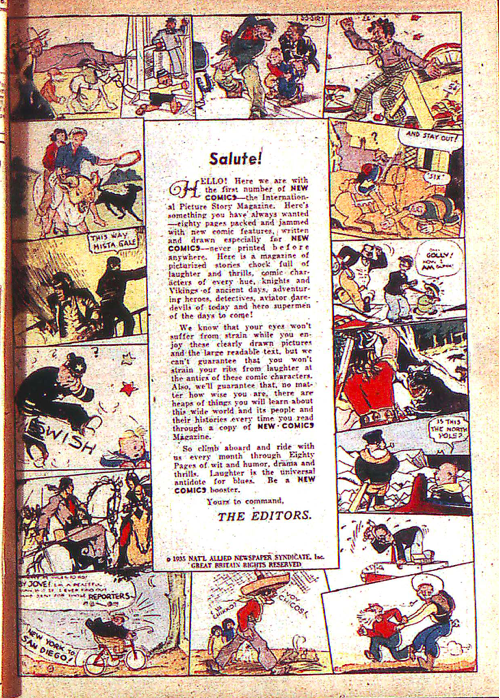
And, surely it can’t escape our attention “…hero supermen of days to come!” Who exactly were the supermen of days to come? There is not a single superman character in this comic magazine. Is this the first inkling of the Major planning for Siegel and Shuster’s Superman in a comic? There is no other explanation as far as I can tell.
Reading New Comics #1 there is a sense of energy and creativity with a more contemporary feel. There were twice as many pages with some comics going for 4 pages thus providing for a more complete story sequence. Among the contributors were several women.
Constance Naar who first appeared with a byline in New Fun #5 contributed a prose story about Petey the Pup with illustrations in black and white aimed for younger children. Her byline also appeared on the article “The Bookshelf.” Emma McKean made her debut with several pages in black and white. The first page is a comic “Sister and Brother” under the heading “Junior Section For Younger Folks.” The comic is clearly aimed at smaller children as the story and dialogue are simple. McKean also contributed a page of paper doll cutouts and a puzzle page. She is the only woman in this magazine to contribute a comic and the first for DC. In the 1940’s she worked on Dell Publications’ Looney Tunes and illustrated a number of children’s books. Thanks to comics historian Trina Robbins we know more about the women who contributed to Golden Age comics.
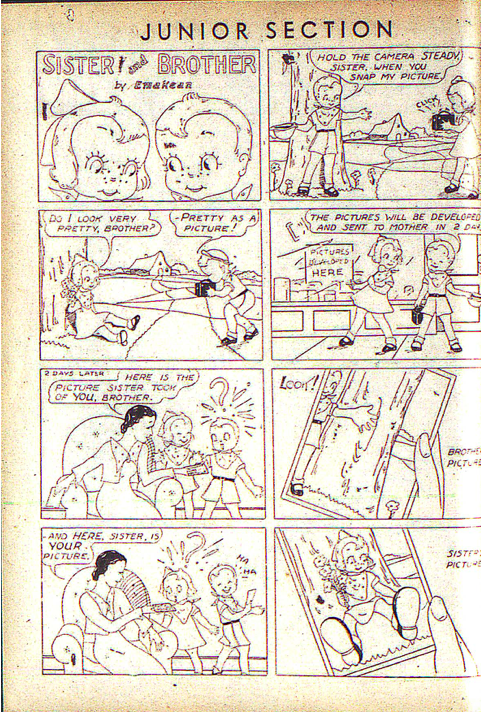
The other woman who had a byline in this magazine was Josephine Craig for an article entitled “Worth-While Films to Watch For.” So far, I haven’t been able to turn up any information on her. It’s possible this was a pseudonym or she was one of many women whose information is not recorded.
There were a couple of creators who showed up in the magazines for one shot. More than likely they were artists who had completed artwork looking for a paying outlet. In New Comics #1 Robert Franklin “Bo” Brown, a prolific cartoonist whose work appeared in hundreds of magazines over his long career, such as The Saturday Evening Post, and The New Yorker, contributed one page of several cartoons in black and white entitled “Dizzy and Daffy.” Dave Ruth contributed a comic supposedly for children entitled “Bunco the Bear.” It is an odd comic and an odd character and doesn’t appear again. At the moment I have found nothing on Dave Ruth as an artist.
Quite a few creators from New Fun continued in New Comics #1. Joe Archibald contributed a comic in black and white, “The Tinker Twins at Penn Point” featuring two twins attending military school who are very well behaved. The older cadets play a trick upon them and they end up in trouble. I found Archibald’s earlier comic in New Fun #1 and 2, “Scrub Hardy” more interesting than this one. Archibald also contributed a prose story with illustrations “Sawbones, C.O.D.” which features a couple of cowboys down on their luck. They attempt to fool the local sheriff into arresting one of them so they can get a good meal. The story is a little heavy on supposed Western slang. Archibald also contributed his regular illustrated article on Sports.
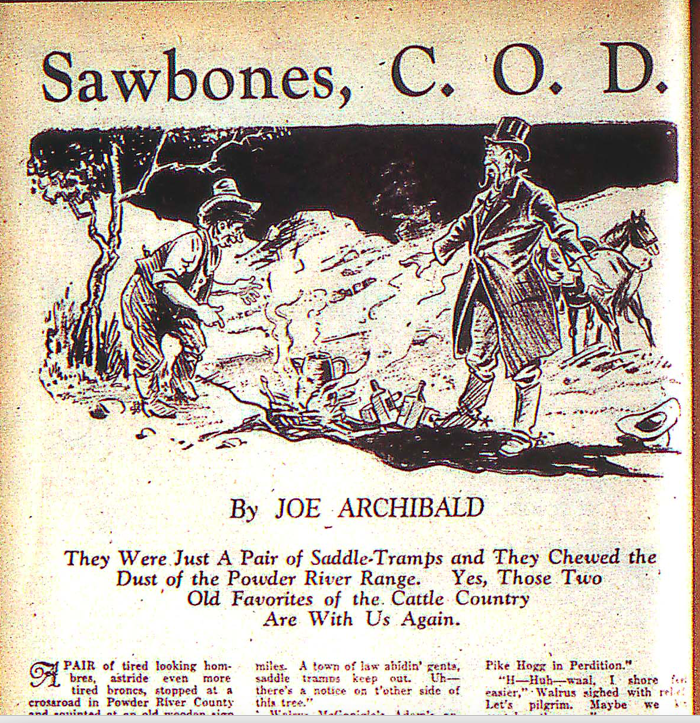
From his first appearance in New Fun #1, Tom Cooper, a regular contributor, appears with his quirky comic in color, “Cap’n Spinniker.” The captain’s last name has several different spellings throughout his run. I especially love the sly puns in the comic such as the name Lollypop on the side of the ship as in the good ship, etc.

Matt Curzon, who first appeared in New Fun #6 contributed an activity entitled “The Pixie Puzzle Adventures” and two new comics, one in black and white, “Freddie Bell He Means Well” about a little boy who seems to help people but ends up causing them problems and one in color, “Dickie Duck,” which has a somewhat similar theme. Dickie, the anthropomorphic duck, in his attempt to water the houseplants, ends up watering a matronly woman’s hat. It’s kind of silly but well-drawn and the story is clear and concise. All Curzon’s comics have strong clean lines that are attractive and easy to follow.
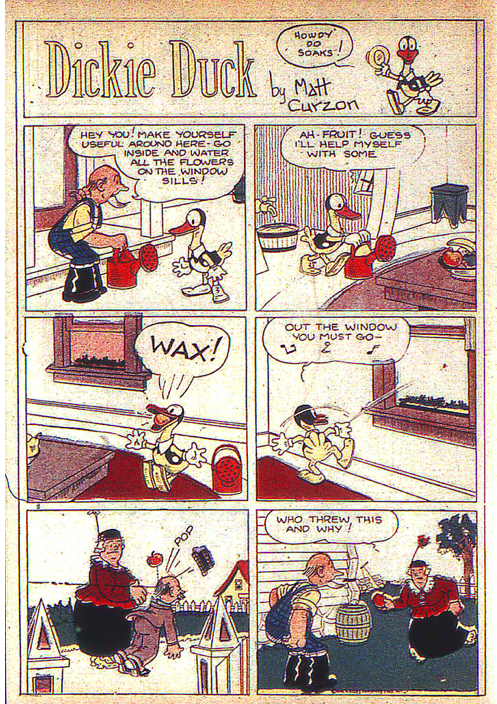
A recurring character in our ongoing story of the Major’s comics, Whitney Ellsworth, contributed a new comic in color, “Billy the Kid,” featuring a young boy, Billy, who builds a soapbox. His friend Pudge wants to drive it and crashes it into a tree. Billy informs him that the steering wheel doesn’t work. I didn’t find it particularly interesting but then I’m not a 10 year-old boy.
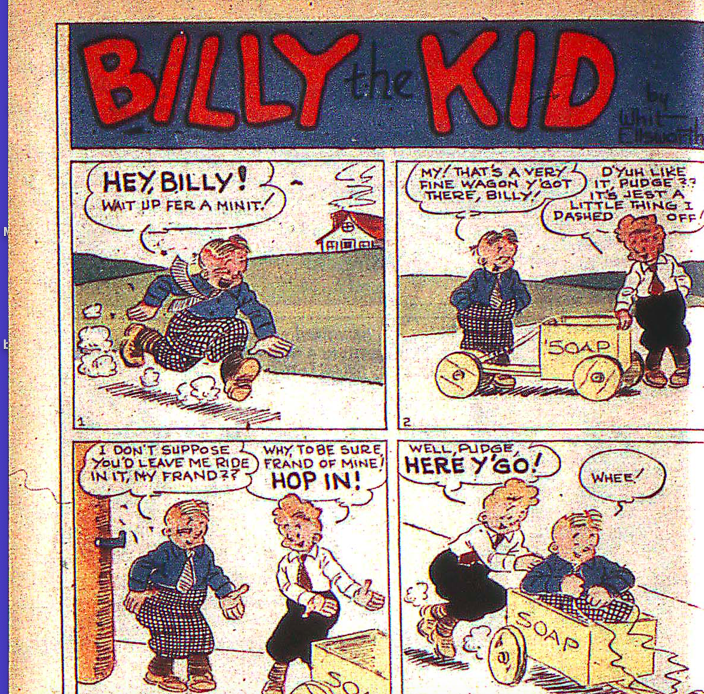
Another returning creator who began in New Fun #1, Clem Gretter appears with a new comic in color that he must have written as well as drawn. He is usually in collaboration with Ken L. Fitch as the writer. “Ray and Gail” is beautifully drawn in an art deco style. The story is a little unclear but seems to be heading towards a noir genre. We shall see what happens.
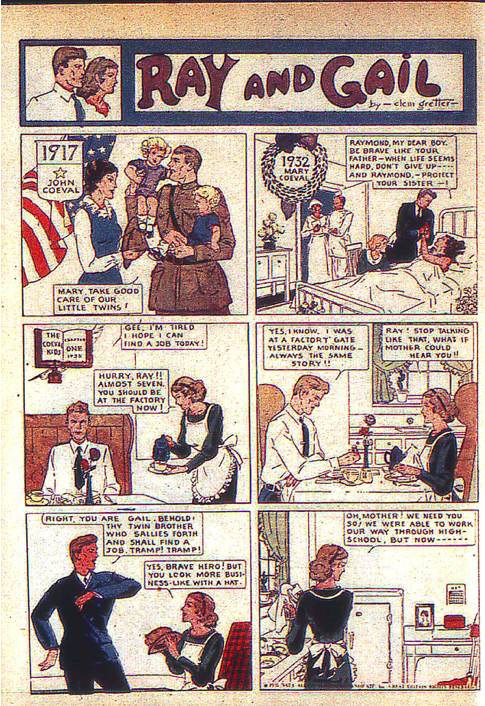
H. C. (Henry Carl) Kiefer whose recurring comic in New Fun “Wing Brady” also appears in New Comics #1 with an illustrated factual piece “Just Suppose.” The byline reads H.C. and A. D. Kiefer. Grand Comics Database has A. D. Kiefer as a “relative” of Kiefer’s but she was, in fact, his wife Aline De Kerosett Kiefer. Kiefer initially signed his Wing Brady series as De Kerosett. Aline De Kerosett was a talented creator in her own right. Kiefer met her in Paris after WWI when he was studying at the Academie Julian. She was a lyric soprano appearing with the French Opera Company. During WWI she served with the Red Cross and had been wounded and gassed. David Saunders has information about her in his Guide to Pulp Artists. With her appearance this makes a total of four women in New Comics #1.
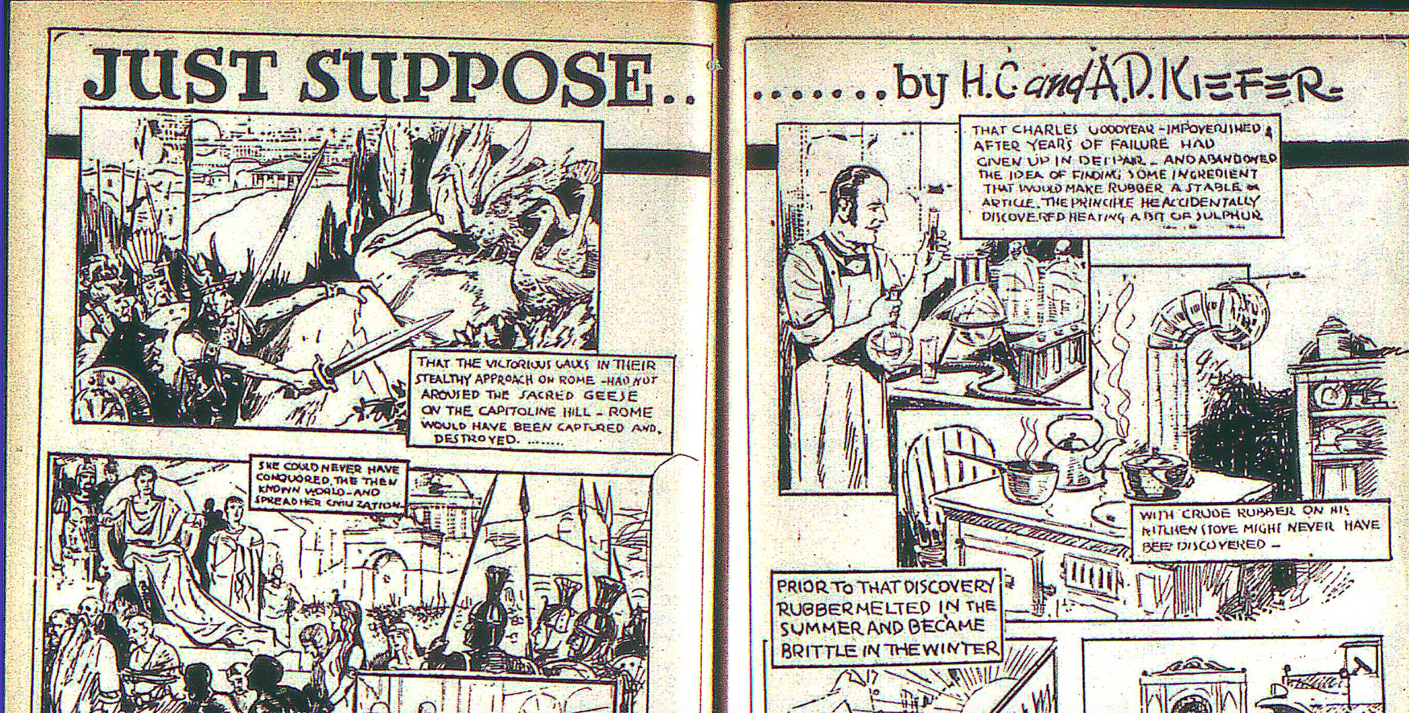
Picking up the Major’s pulp story “Barry O’Neill” in New Fun #4 and beginning “Bob Merritt” in New Fun #5, Leo O’Mealia would continue contributing throughout the Major’s era. His contribution to New Comics #1 was the comic, “Now When I was a Boy,” in color. It’s obvious from this comic that his contributions as an artist were stronger than his scripts as the script seems dated. He’s one of my favorite artists and we’ll talk about him as we go along.
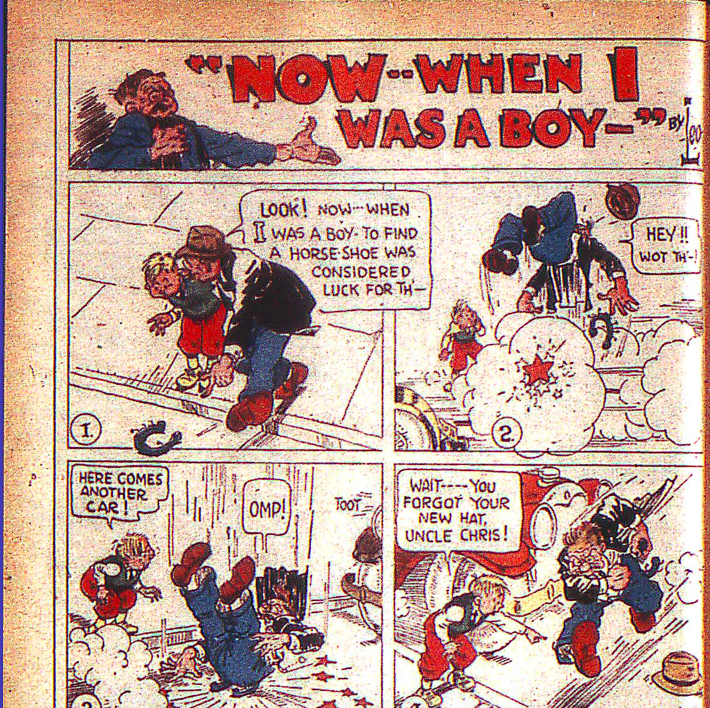
Al Stahl who may or may not have been contributing “Oswald the Rabbit “in the first 5 New Funs contributed a comic in color, “Needles,” in “Needles uses his Noodle.” It’s a simple story well executed with a cartoon style and obviously that of a seasoned creator even though Stahl was only 20 years old at the time.
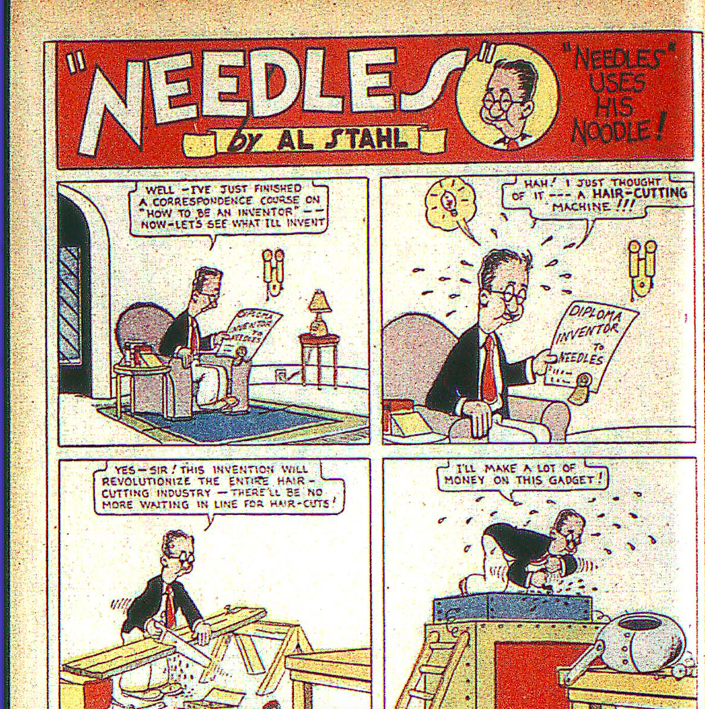
Vincent Sullivan was a very busy man. Besides acting as assistant editor and creating the cover, his comic “Jibby Jones” appears in color. There’s not a lot of dialogue but it is well drawn and the story is clear.
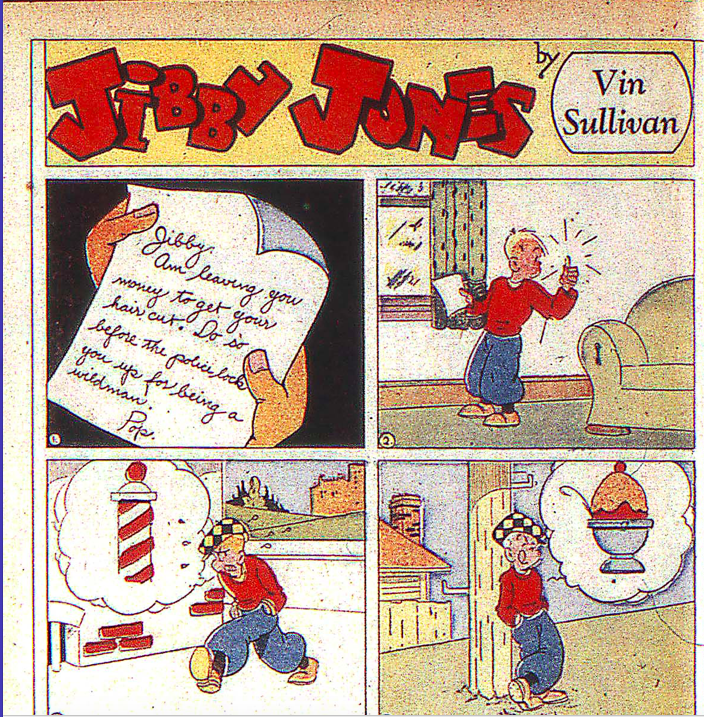
In addition to those already mentioned there are several articles and activities, most unsigned. “It’s Magic” by Andrini the Great began in New Fun #2 as “Magic.” “Cartoon Corner,” an activity, is signed Stan and assumed to be Stanley Randall. “Stamps and Coins” is a continuation from the New Fun series and is unsigned as is “The Radio Dialer” appearing on the same page as “The Book Shelf” by Constance Naar. It could have been written by her as well. Danny Ryan is introduced as the person writing “Hobbies.” I haven’t yet found any information on him.
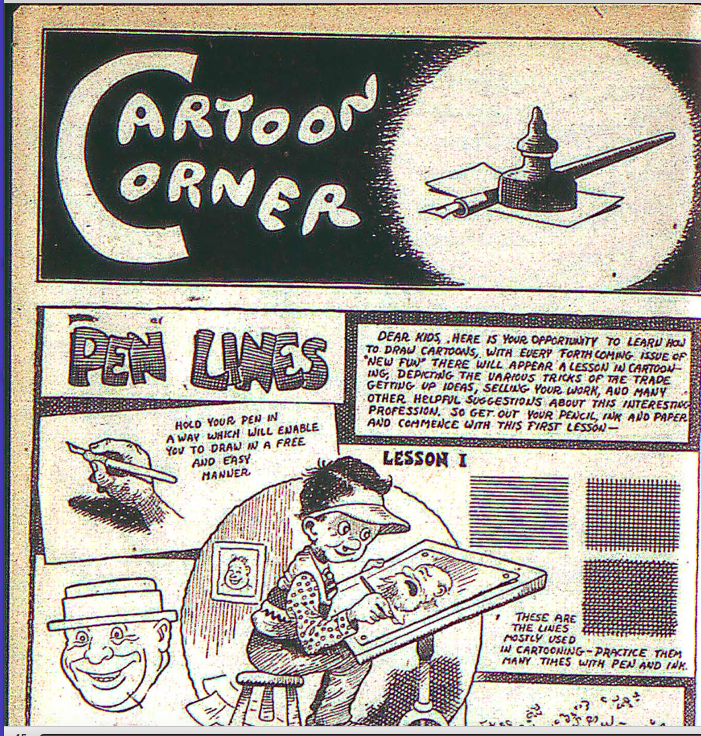
There were quite a few creators newly appearing in New Comics #1 and I’ll go into more depth about them in the next New Comics post. Rafael Astarita beautifully illustrated the Major’s pulp story “Allan de Beaufort” in a classic comics style. Jon Blummer as John Elby illustrated the Major’s script “Captain Quick” in black and white. Ellis Edwards’ comic “Chikko Chakko” in black and white is nicely drawn and intriguing. It isn’t the usual stereotype of Mexican people. A young Walter C. Kelly had a full two page spread of scenes from “Gulliver’s Travels.” R.G. Leffingwell contributed “Sir Loin of Beef,” a filler “Axel,” “Sagebrush and Cactus,” a filler “Fanny,” all in color and also drew the reader activity “It’s a Dern Lie.” I enjoyed his “Sagebrush and Cactus.” The artwork is attractive and he’s a good story teller. R.H. Livingstone illustrated the “Vikings” from a script by MWN and also an original unusual story “Peter and Ho-La-an.” His artwork is more illustrative and quite beautiful. Sheldon Mayer at 19 years of age was already revealing his talent and the Major gave him plenty of space to do so. His “J. Worthington Blimp” and “The Strange Adventures of Mr. Weed” were each at 4 pages and in color. Obviously, the Major recognized his talent. Mayer’s artwork is attractive and both stories left you wanting to read the next installment. Billy Weston wrote another unusual tale that I’m interested to follow—”17-20 on the Black” illustrated by Tom Cooper in black and white.
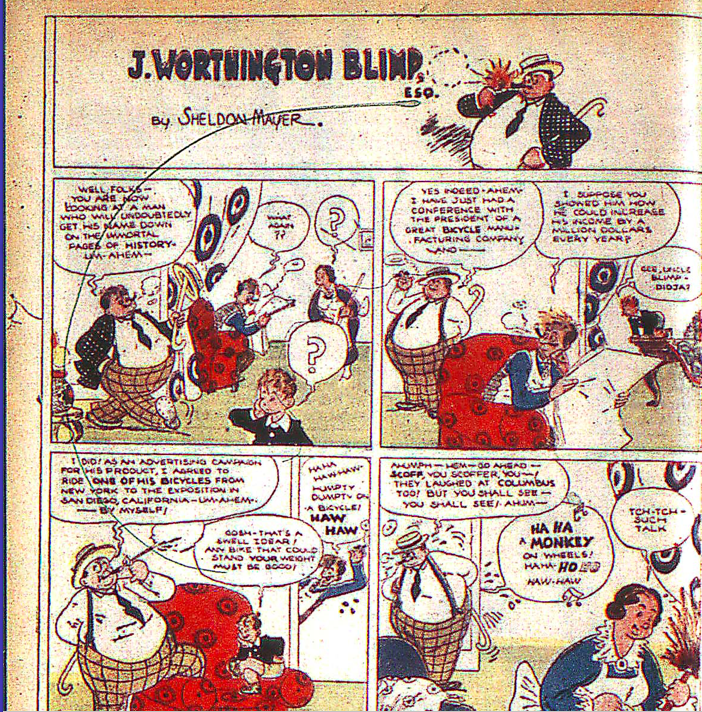
Finally “Wing Walker” by Thor, a rather noirish tale appropriately in black and white also was 4 pages. I have a theory about the mysterious Thor, which I’ll go into as we move through New Comics.
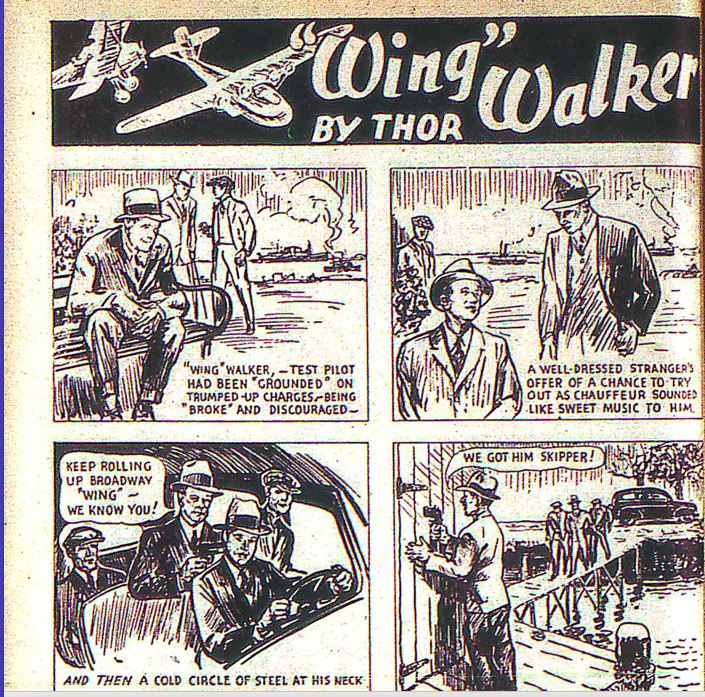
That’s a lot of comics—80 pages with many in color. If you’re asking yourself as I did, how the Major accomplished this with all the shaky finances, one of the erudite members of the MWN group explained that the entire magazine was printed on newsprint so no slick cover and cheaper to produce. So much for the Major’s poor business acumen.
Before racing off to More Fun #7, which was being promoted in New Comics #1, there were a couple of ads for the Pastime Novelty Company that caught my attention. Unlike the New Funs that had a number of ads there are almost none in New Comics #1. ThePastime Novelty Company ads are full page ads on the inside front and back cover, one full page ad in the magazine and one full page ad on the back cover. They are all for toys—Meccano and Gilbert sets for boys and Miss Muffet play sets and Shirley Temple Dolls for girls. They have illustrations that appear to be those of Dick Loederer and the address to send money is the same building as the editorial offices for National Allied Newspaper Syndicate, Inc. I’d love to find out more about the company and what, if any, were the connections other than being in the same building.
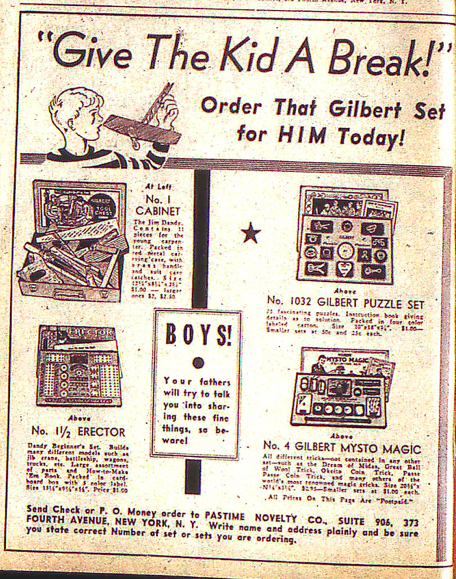
Despite whatever difficulties there were, the Major was determined to create his comics publishing company and 1936 proved to be a year of creativity inspiring not only creators but publishers as well. I’m looking forward to the next installments of these comics. More fun is on the way!
Special thanks to the legendary research of Jerry Bails, Grand Comics Database, Bob Hughes, Lambiek Comiclopedia, Trina Robbins and David Saunders.
